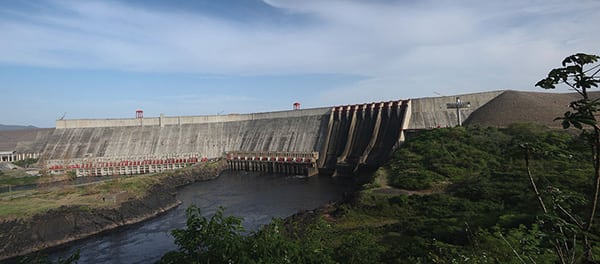Venezuela Faces Existential Power Troubles
Oil-rich Venezuela is gripped by a power crisis so debilitating that the government has instituted four-hour daily blackouts across most of the country, forced hotels and malls to generate their own power, and required heavy industries to slash power usage by 20%. In desperation, the government also closed the entire country for five days during the Easter holidays in March, reduced the public sector workweek to two days, declared that every Friday will be a national holiday, and lately, even ordered citizens to set clocks half-an-hour ahead to save power. But these measures have come with consequences: Power cuts have incited riots and looting in the country’s second-largest city, Maracaibo, and the crisis has emboldened an opposition movement that is seeking a referendum to oust President Nicolás Maduro, whose term ends in 2019.
The government blames the crippling power shortages on a severe drought—the worst in 40 years—a result of the El Niño weather phenomenon. Particularly affected is the 10.2-GW Simon Bolivar hydroelectric facility, the world’s fourth largest, which reaps energy from the now-withered Caroni River via the massive concrete gravity Guri Dam and on its own generates about 73% of the country’s power. The Ministry of Electrical Energy said in March that the Guri Reservoir’s water levels had fallen to 244.9 meters (m) above sea level and warned that the dam could reach a “collapse zone” if water levels fall below 240 m (Figure 1). Such low levels could jeopardize the operational safety of the Simon Bolivar plant’s turbines, it said. Two of the plant’s 20 turbines have already been shut down owing to equipment trouble, and at least six more will need to idle if reservoir levels drop. Desperation in high gear, state power corporation Corpoelec this April began dredging work—using heavy machinery and laborers with picks and shovels—to funnel “vital liquid” to the turbines.
Corpoelec—an entity created in 2007 through the merger of 10 state-owned and six privately owned power companies—has also pegged the crisis on shortages of natural gas and diesel supply to its newer plants, owing to financial delays, as well as to deficiencies of materials like steel pipe, pumps, compressors, and other imported equipment, the electricity ministry told Argus Media in early April.
But these official explanations have not satisfied the regime’s critics. Maduro’s political opponents deny that the crisis is caused solely by the drought, pointing instead to the administration’s mismanagement and imposition of price and currency controls, which they say pushed the country with the world’s largest oil reserves over an economic brink in 2013. Other experts point to nearly 15 years of blatant neglect of Venezuela’s power system. The socialist government hasn’t added enough capacity since 2000 to slake soaring power demand, and the country has endured periodic blackouts since at least 2009, they note.
In 2010, a sudden demand spike during another drought brought the country’s power system to the brink of collapse. As POWER then reported, the situation was exacerbated by neglect and corruption at many of the state’s power facilities, including at the 2-GW oil- and gas-fired Planta Centro on the Carabobo state coast (which was barely operating at 273 MW). In 2011, the government again declared an emergency in the power sector, citing a lack of investments. And in 2013, just months after the death of its former, fiery president, Hugo Chavez, a failure in one of the national grid’s transmission lines cut power to nearly half of the country, including much of the capital, Caracas. While Maduro, then newly elected, suggested the failure had been caused by sabotage and blamed opposition groups, an energy ministry official admitted to a television station that the failures were grid-related.
The current crisis is deeper than earlier episodes because it is accompanied by the brutal economic wallop of plunging prices for oil, the country’s main export. But the neglect is reportedly still rampant. As Venezuelan daily El Nacional reported this February, Corpoelec workers from seven states protested outside the company’s headquarters because, among other reasons, about 8.1 GW of the company’s 17.6 GW capacity was out of commission as a result of equipment breakdowns. Significantly, Planta Centro hasn’t generated power since December 2015, the workers said. Corpoelec said it is doing everything it can to repair the plants with help from Cuban power experts and the Venezuelan army and navy. It has also redoubled efforts to complete repairs at the gas-fired 1.43-GW Termozulia complex near Maracaibo, and at least one new plant, a Chinese-built turnkey 600-MW gas- and diesel-fired complex adjacent to Planta Centro, should start operations by mid-2016, Corpoelec chief Luis Motta Dominguez said in early April.
—Sonal Patel, associate editor
